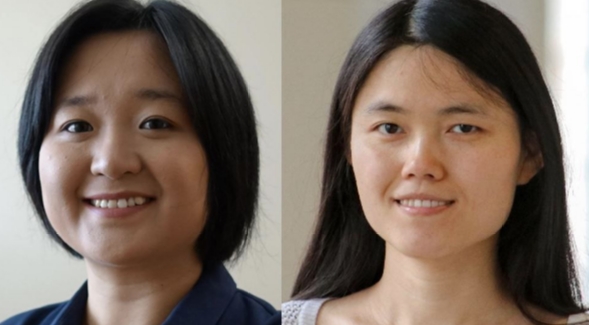SDSU Imperial Valley Faculty Receive NSF Award for Math Education
Funds will support a summer math workshop for incoming students.

There’s more to college than just attending classes. Navigating campus life, learning to network, and knowing where to turn for help also play a role in student success.
Now, incoming students who are interested in pursuing STEM careers will have the opportunity to cultivate these connections at San Diego State University Imperial Valley. Two faculty members have received a nearly $200,000 National Science Foundation award for Hispanic-Serving Institutions to develop a Summer Bridge Math Experience to prepare students for success in the fall semester.
Principal investigator Huan Qin and co-principal investigator Tingting Tang, assistant professors of mathematics at SDSU Imperial Valley, envision the program as a way to boost student confidence while encouraging an appreciation for math’s practical applications.
“We want to show students that math is the foundation of all the other sciences and give them more options after they graduate,” said Qin.
The pilot project will include a four-day program that will run for two summers. Each morning will start with math workshops designed to review concepts and prepare both majors and non-majors for fall semester math classes. Some students need to brush up on math skills before tackling more advanced work.
“In the full formal classroom, we don't have the time to review everything,” Qin said. “They just need a little bit of preparation.”
Afternoons will consist of a campus tour, a visit to the library, short talks by administrators and faculty, and meetings with advanced math students. SDSU Imperial Valley is the only four-year university in the Valley, and most students transfer here from community college, opting to stay in the Valley near their families rather than seek educational opportunities elsewhere.
“This project will help them to have a more smooth transition to a four-year university,” said Tang.
Tang, who went from a Chinese university to a U.S. graduate school, knows firsthand the challenges presented by a transition without adequate preparation.
“When I first arrived, I just felt very lost,” Tang said, adding that it wasn’t always clear where she should turn for help. “Years later, I find out there are these resources, but it would be nice to know them ahead of time. So I hope this experience will be very useful.”
The students will also take field trips to local nonprofits and industries to learn how math connects to climate science, agricultural engineering and other STEM careers. More than 90% of SDSU Imperial Valley’s students are Latinx, and nearly 70% are women. One goal of the program is to boost the workforce in the Valley, improving employment opportunities for underrepresented groups and women in STEM.
“This is not really just about math learning. I think it's about providing students the full pathway to the four-year university” said Qin. “So they get a higher degree to get a better job.”
Qin and Tang are SDSU Imperial Valley’s only math faculty. After the summer bridge program, students will immediately join their classrooms, so they will be able to follow their progress.
“We'll monitor and track their performance to see if there’s improvement, or less struggle with certain topics,” said Qin.
If the program is successful, Qin thinks students will spread the word and help build SDSU Imperial Valley’s reputation as a STEM-oriented school. Qin and Tang hope to widen its impact through additional grants in the future.
The program will complement SDSU Imperial Valley’s efforts to expand and better serve the needs of the community.
“The Summer Bridge Math Experience comes at a pivotal time of growth for SDSU Imperial Valley,” said Hala Madanat, interim vice president for research and innovation. “Equipping students with a solid foundation in mathematics will strengthen the workforce, providing local talent to fill a growing need for STEM workers.”



